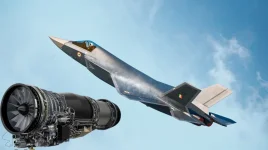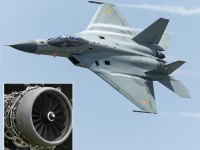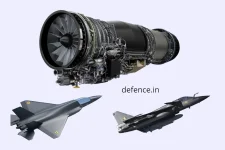- Views: 3K
- Replies: 20
India's ambition to develop a powerful, domestically produced engine for its futuristic Advanced Medium Combat Aircraft (AMCA) is advancing significantly, with a 120 kilonewton (kN) thrust engine project reportedly approaching to complete the pre-sanction phase.
This development represents a crucial step towards achieving self-sufficiency in critical military aerospace technology and is poised to become one of the nation's most prominent defence research initiatives.
For many years, India's indigenous defence projects have encountered considerable challenges, often stemming not from a shortage of funds but from a lack of cohesive effort among various organisations.
However, sources indicate a renewed sense of strategic purpose is now driving the AMCA engine project. Key Indian entities, including the Gas Turbine Research Establishment (GTRE), the Indian Air Force (IAF), the Centre for Military Airworthiness and Certification (CEMILAC), and various academic institutions, are reportedly collaborating closely.
This unified approach is seen as essential to overcoming previous obstacles and ensuring the project's success. The AMCA itself is envisioned as a fifth-generation stealth fighter, requiring an advanced engine capable of delivering substantial thrust while helping the aircraft maintain a low radar profile.
The creation of a next-generation fighter engine demands highly specialised knowledge. This requirement has been carefully assessed, and steps have been taken to bridge any existing expertise gaps.
It is understood that major international Original Equipment Manufacturers (OEMs) have been engaged in intensive consultations to fast-track the development process.
These discussions have reportedly provided vital insights, helping to align India’s technological capabilities with global benchmarks and ensuring the 120 kN engine will meet the demanding performance standards of modern air combat.
A formal proposal for the 120 kN engine, which is planned to be developed in partnership with private Indian firms to power the AMCA, has now progressed to the pre-sanction stage. Senior government officials are said to be closely tracking the project's advancement, indicating strong backing from the highest levels of administration.
If formally approved, this initiative could rank among India's most valuable military aerospace endeavours. The project's sanction file is anticipated to be submitted to a top governmental office for a final critical review and approval in the near future.
GTRE, a leading defence research laboratory under the Defence Research and Development Organisation (DRDO), has an extensive background in aero-engine technology, notably including its work on the Kaveri engine.
While the Kaveri project faced its own set of challenges and did not initially meet all requirements for previous aircraft programs, the invaluable experience and technical knowledge acquired during its development are now being effectively applied to the new 120 kN engine.
This leveraging of past lessons is considered a key factor in the accelerated progress of the current engine program, which is critical for the capabilities of the AMCA.
The successful development of this engine would significantly reduce India's reliance on foreign suppliers for powering its frontline fighter aircraft.






